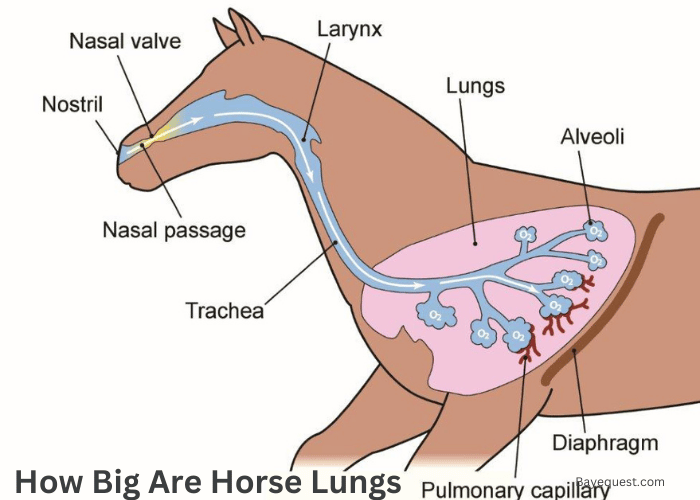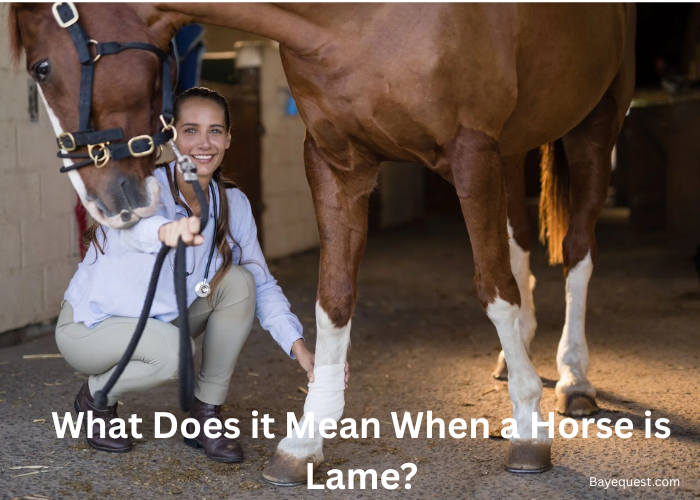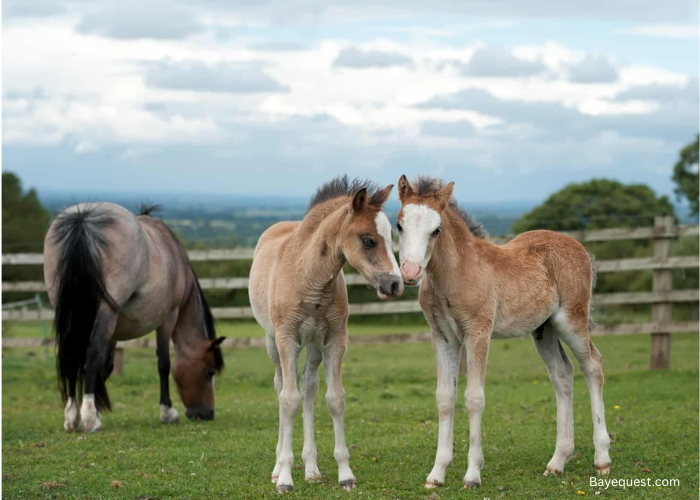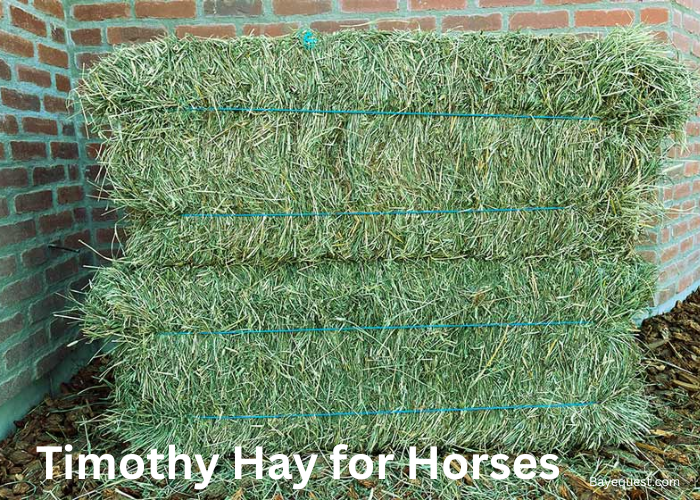Horse lungs are essential to their remarkable stamina and strength.
These powerful organs work tirelessly, pumping air and delivering oxygen to fuel their muscular bodies.
With every breath, they support the energy needed for speed and endurance, making them truly extraordinary.
Let’s dive into the fascinating world of horse lungs and uncover the secrets behind their impressive size and how they contribute to the incredible performance of these majestic animals.
How Big are Horse Lungs? Key Takeaway
Horse lungs are impressively large. They can hold about 40 liters of air, which is roughly ten times the capacity of human lungs. This equals the volume of 14 milk jugs. Their size and efficiency allow horses to perform at high speeds and sustain their endurance during demanding physical activities.
Why are Horse Lungs so Big?
Horse lungs are so big to support their high oxygen demands. Horses are built for endurance and speed, needing large amounts of oxygen to fuel their muscles.
Their large lung capacity allows them to take in more air with each breath. This is crucial during strenuous activities like galloping or long-distance running.
A bigger lung capacity also helps regulate body temperature by allowing efficient heat exchange. This anatomical adaptation is essential for their survival and performance.
Horse Lungs Anatomy
Horse lungs are complex and efficient. Each lung is divided into lobes.
The right lung has three lobes, while the left has two. Air enters through the nostrils, travels down the trachea, and reaches the bronchi.
The bronchi branch into smaller bronchioles. At the end of bronchioles are alveoli, tiny sacs where gas exchange happens.
Oxygen passes into the blood, and carbon dioxide is expelled. The diaphragm and intercostal muscles help the lungs expand and contract, enabling breathing.
Functionality of Horse Lungs
Horse lungs are designed for maximum efficiency. Here’s how they work:
Air intake. Horses breathe through their nostrils, not their mouths. Air travels down the trachea to the lungs.
Bronchi and bronchioles. Air moves through the bronchi, which split into smaller bronchioles, distributing air throughout the lungs.
Alveoli. Tiny sacs called alveoli facilitate gas exchange. Oxygen enters the bloodstream here, while carbon dioxide is removed.
Blood oxygenation. Oxygen-rich blood is pumped from the lungs to the heart and the rest of the body.
Breathing mechanics. The diaphragm and intercostal muscles expand and contract the lungs, enabling inhalation and exhalation.
Efficient exchange. Horses have a large lung capacity, allowing them to take in more oxygen and expel more carbon dioxide with each breath.
Horse Lungs Vs Human Lungs
Horse lungs are much bigger than human lungs.
A horse’s lungs can hold about 40 liters of air. Human lungs can hold about 4 liters.
Horses need more oxygen because of their large bodies and intense activity. Their lungs fill most of their chest cavities.
Human lungs are smaller and fit neatly behind the ribcage. Horses breathe through their nostrils, not their mouths, but humans can breathe through both.
Horse lungs work harder during exercise, pumping more air to fuel their muscles. In short, horse lungs are built for power and endurance.
Other Equine Lungs Vs Horse Lungs
Horse lungs are larger than those of other equines. Compared to donkeys and zebras, horses have a bigger lung capacity.
This allows them to take in more air and oxygenate their blood better. Horses are built for speed and endurance, needing powerful lungs.
While strong, donkeys don’t need as much lung power. Zebras have decent lung size but are still smaller than horses.
Each equine’s lungs match their lifestyle and activity needs. Horses simply have the biggest lungs for their high-energy demands.
Factors Affecting the Horse Lung Size and Health
Several factors influence the size and health of horse lungs. These include:
Breed. Larger horse breeds have bigger lungs, which accommodate their greater oxygen requirements.
Age. Younger horses possess healthier lungs due to less wear and tear and a lower likelihood of chronic respiratory conditions.
Fitness level. Horses in peak physical condition have stronger, more efficient lungs, as regular exercise enhances respiratory capacity.
Health conditions. Respiratory diseases, such as pneumonia or chronic obstructive pulmonary disease, can impair lung function and reduce its size.
Environment. Horses kept in environments with clean air are less likely to suffer from respiratory issues. Conversely, exposure to dusty or polluted conditions can harm lung health.
Diet and nutrition. Proper nutrition supports overall health, including lung function. Nutrients that support the immune system can help maintain respiratory health.
Interesting Facts about the Lungs of a Horse
1. Horse lungs have a capacity of approximately 40 liters of air.
2. Horses are obligate nasal breathers, using only their nostrils for respiration.
3. Oxygen consumption in horses can increase up to 20 times during intense exercise.
4. The respiratory system features a high number of alveoli, facilitating efficient gas exchange.
5. The large surface area of horse lungs enhances oxygen absorption.
6. Strong diaphragm and intercostal muscles contribute to their powerful respiratory capacity.
7. Horses exhibit a significantly higher respiratory rate during physical exertion.
8. Lung efficiency in horses can improve with regular training and conditioning.
9. Horse lungs play a crucial role in thermoregulation during strenuous activities.
10. Horses have a unique breathing mechanism called the “locomotor-respiratory coupling.” This mechanism syncs their breathing rhythm with their stride rate.
11. A horse’s lung capacity and ventilation increase dramatically during galloping to meet oxygen demands.
12. Horses have a higher resting respiratory rate than many other mammals, averaging about 8-16 breaths per minute.
13. A horse’s trachea is long and flexible, allowing for efficient air passage even while the head is in various positions.
14. Foals have developing lungs that grow and mature significantly in the first year of life.
15. Horses can suffer from “roaring,” where partial paralysis of the vocal cords affects airflow and breathing efficiency.
Common Respiratory Issues of Horses
Here are some common respiratory issues that affect horses:
Chronic Obstructive Pulmonary Disease (COPD). Also known as “heaves,” this condition is similar to asthma in humans and is triggered by allergens like dust and mold.
Exercise-Induced Pulmonary Hemorrhage (EIPH). Often seen in racehorses, this condition involves bleeding into the lungs during intense exercise.
Inflammatory Airway Disease (IAD). Common in young horses, this condition causes inflammation of the airways and leads to coughing.
Pneumonia. A bacterial or viral infection that causes inflammation of the lung tissue, often seen in foals or horses with compromised immune systems.
Equine influenza. A highly contagious viral infection that causes fever, coughing, and nasal discharge.
Rhodococcus equi infection. Primarily affects foals, causing pneumonia and lung abscesses.
Laryngeal Hemiplegia (“Roaring”). A condition where one side of the larynx becomes paralyzed, causing a distinctive roaring sound during breathing.
Strangles. A bacterial infection caused by Streptococcus equi. (Read also: How to treat strangles.)
Pleuropneumonia. A severe condition involves lung inflammation and the pleura (lining of the chest cavity).
Guttural Pouch Infections. Infections in the guttural pouches, air-filled sacs connected to the Eustachian tubes.
Equine Herpesvirus (EHV). A viral infection that can cause respiratory disease, neurological symptoms, and reproductive issues.
Aspiration Pneumonia. Occurs when food or liquid is inhaled into the lungs, leading to inflammation and infection.
Allergic Rhinitis. Inflammation of the nasal passages due to allergens.
FAQs
Can a horse breathe while running?
Yes, horses breathe while running, but their breathing is synchronized with their stride. This is known as “locomotor-respiratory coupling.” For every stride a horse takes, it inhales and exhales once. This efficient mechanism allows them to meet the high oxygen demands of intense physical activity.
Why do horses only breathe through their noses?
Horses are obligate nasal breathers, meaning they can only breathe through their noses, not their mouths. This adaptation ensures a steady airflow during strenuous activities and protects their airways from debris. It also allows them to eat and breathe simultaneously, which is crucial for grazing animals that spend much of their time eating.
How Big are Horses Lungs? Conclusion
Horse lungs are truly remarkable. Their size and efficiency power these majestic animals. Understanding their lungs helps us appreciate their strength and endurance.
Those big lungs play a crucial role, whether racing or just enjoying a leisurely ride. Next time you see a horse, remember the incredible machinery inside. It’s all about breath and power.
Keep learning and stay curious about these amazing creatures. Thanks for riding along with us on this lung-filled journey.








